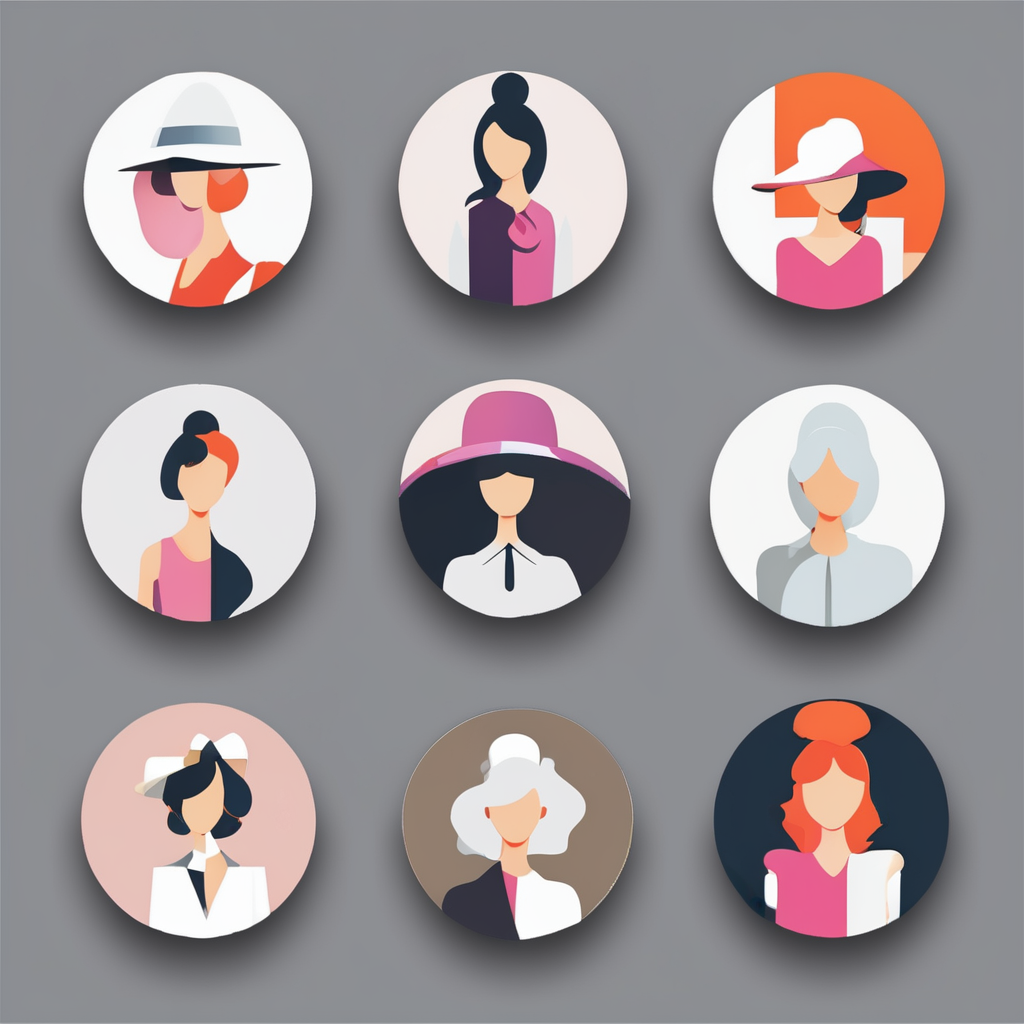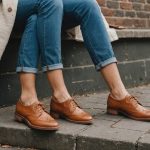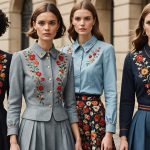Unleash the Power of Color Psychology: Boost Your Mood with Smart Fashion Choices!
Understanding Color Psychology
Color psychology is the study of how colors affect human behavior and emotions. It’s a powerful tool that can transform your designs, spaces, and even your wardrobe by influencing your mood and behavior. This field is widely used in marketing, branding, interior design, and art to create desired emotional responses and convey specific messages.
How Colors Influence Mood and Behavior
Colors can evoke specific feelings, influence decisions, and even impact our physiological responses. For instance, red is a powerful color associated with passion, excitement, and energy. It can increase heart rate and create a sense of urgency, making it ideal for use in restaurants, sales promotions, and to highlight important elements in design[2].
In parallel : The Essential Handbook for Selecting Perfect Compression Gear for Enhanced Post-Workout Recovery
Here’s a detailed look at how different colors can influence your mood and behavior:
-
Red: Energy and Passion
This might interest you : Mastering Menopause: Discovering Herbal Remedies for Achieving Hormonal Harmony Naturally;232Revitalize Your Digestive Health: Simple Tips for Incorporating Mindful Eating into Everyday Life
-
Emotion: Red is associated with passion, excitement, and energy.
-
Usage: Use red to grab attention, stimulate appetite, and evoke strong emotions.
-
Example: Restaurants often use red to stimulate appetite and create a lively atmosphere[2].
-
Blue: Calm and Trust
-
Emotion: Blue is a calming color that evokes feelings of peace, trust, and stability.
-
Usage: Use blue in environments where relaxation and focus are needed, such as bedrooms, offices, and corporate branding.
-
Example: Financial institutions and healthcare providers often use blue to convey trust and stability[2].
-
Purple: Creativity and Luxury
-
Emotion: Purple is associated with creativity, wisdom, and spirituality.
-
Usage: Use purple to add a touch of elegance and sophistication. It’s perfect for creative spaces, high-end brands, and products targeting a sense of luxury and exclusivity.
-
Example: Luxury brands often use purple to convey a sense of high-end quality and creativity[2].
-
Orange: Enthusiasm and Warmth
-
Emotion: Orange is an energetic and enthusiastic color that combines the warmth of red and the cheerfulness of yellow.
-
Usage: Use orange to create a lively and inviting atmosphere. It’s great for fitness centers, social spaces, and promotional materials aimed at encouraging action and enthusiasm.
-
Example: Fitness centers often use orange to create an energetic and motivating environment[2].
-
Pink: Love and Calm
-
Emotion: Pink is a nurturing color associated with love, kindness, and calm.
-
Usage: Use pink in spaces designed for relaxation and comfort, such as bedrooms and nurseries. It’s also effective in marketing products related to beauty and care.
-
Example: Beauty and care products often use pink to convey a sense of nurturing and calm[2].
-
Black: Sophistication and Power
-
Emotion: Black is a powerful color associated with sophistication, elegance, and authority.
-
Usage: Use black to convey a sense of luxury and formality. It’s commonly used in high-end fashion, technology, and luxury products.
-
Example: High-end fashion brands often use black to convey sophistication and power[2].
How to Use Color Psychology in Your Wardrobe
Understanding how colors affect your mood and behavior can help you make smart fashion choices that enhance your personal style and emotional well-being.
Choose Colors That Align with Your Mood
When selecting clothes, consider the emotions you want to evoke. Here are some tips to help you choose the right colors for your wardrobe:
-
Red: If you need a boost of energy and confidence, wear red. It can make you feel more passionate and energetic.
-
Example: Wear a red dress or shirt for a job interview to make a bold and confident impression.
-
Blue: For a calming and trustworthy look, opt for blue. It can help you feel more relaxed and focused.
-
Example: Wear blue for a casual day out or a business meeting to convey trust and stability.
-
Purple: To stimulate your creativity and add a touch of luxury, wear purple.
-
Example: Wear a purple scarf or accessory to add a creative and sophisticated touch to your outfit.
-
Orange: For an energetic and enthusiastic look, wear orange. It can help you feel more lively and social.
-
Example: Wear orange for a workout or a social event to create a lively and inviting atmosphere.
-
Pink: To feel more nurturing and calm, wear pink.
-
Example: Wear pink for a relaxing day out or a beauty-related event to convey a sense of care and kindness.
-
Black: For a sophisticated and powerful look, wear black.
-
Example: Wear black for a formal event or a business meeting to convey luxury and authority.
The Impact of Color on Your Skin Tone
When choosing colors for your wardrobe, it’s also important to consider your skin tone. Here’s how different colors can complement or contrast with your skin tone:
| Skin Tone | Complementary Colors | Contrasting Colors |
|---|---|---|
| Fair Skin | Soft pastels, cool neutrals (blue, green) | Warm colors (orange, yellow, red) |
| Medium Skin | Earth tones (brown, beige), rich jewel tones (emerald, sapphire) | Bright and bold colors (neon pink, electric blue) |
| Dark Skin | Deep jewel tones (ruby, emerald), metallic colors (gold, silver) | Cool pastels (pale pink, baby blue) |
How to Make Colors Work with Your Skin Tone
-
Fair Skin: Avoid warm colors like orange and yellow as they can make your skin appear paler. Instead, opt for cool neutrals like blue and green.
-
Example: Wear a blue dress to enhance your fair skin tone and create a calming look.
-
Medium Skin: Earth tones and rich jewel tones work well with medium skin. Avoid bright and bold colors that can overpower your complexion.
-
Example: Wear a brown jacket with an emerald green scarf to complement your medium skin tone.
-
Dark Skin: Deep jewel tones and metallic colors can make your skin tone pop. Avoid cool pastels that can wash out your complexion.
-
Example: Wear a ruby red dress to enhance your dark skin tone and create a sophisticated look.
Cultural and Personal Associations
Color associations can vary significantly across different cultures and individuals. It’s crucial to understand these variations to ensure your color choices align with your target audience or personal preferences.
Cultural Differences
-
Red: In Western cultures, red is often associated with passion and energy, but in Asian cultures, it symbolizes good luck and prosperity.
-
Example: If you’re designing for an Asian market, using red can convey a positive and auspicious message.
-
Blue: While blue is generally calming in Western cultures, in many Latin American countries, it is associated with sadness.
-
Example: When designing for a Latin American audience, use blue cautiously to avoid unintended emotional responses.
-
Black: In Western cultures, black is often associated with mourning, but in many Asian cultures, it symbolizes good fortune.
-
Example: When designing for an Asian audience, black can be used to convey a sense of luxury and good fortune[4].
Personal Preferences
Personal traits and experiences also play a significant role in how individuals perceive colors. For instance, people with certain mental health conditions may have abnormal color perceptions, and very young children often show a preference for red or orange[1].
Practical Tips for Using Color Psychology in Fashion
Here are some practical tips to help you incorporate color psychology into your fashion choices:
Understand Your Audience
- Research your target audience to ensure your color choices align with their cultural and personal associations.
- Example: If you’re designing a brand for a young audience, use bright and energetic colors like orange and yellow to create a lively atmosphere.
Set the Mood
- Decide what emotions you want to evoke with your outfit. Choose colors that align with the mood and message you want to convey.
- Example: For a relaxing day out, wear calming colors like blue or green to create a peaceful atmosphere.
Create Contrast
- Use contrasting colors to draw attention to important elements and create visual interest.
- Example: Pair a black outfit with a bright red scarf to create a striking contrast and draw attention.
Consistency is Key
- Maintain color consistency across all your design elements to create a cohesive and recognizable brand identity.
- Example: If you’re building a personal brand, use a consistent color palette in your wardrobe and social media profiles to create a recognizable image.
Test and Iterate
- Test your color choices with your audience and gather feedback. Be willing to make adjustments based on their responses.
- Example: Try out different color combinations in your outfits and ask for feedback from friends or followers to see what works best.
Real-World Applications of Color Psychology
Color psychology is not just limited to fashion; it has real-world applications in various fields.
Marketing and Branding
Brands use color psychology to create emotional connections with their customers. For example, Coca-Cola uses red to evoke excitement and energy, while Facebook uses blue to convey trust and stability[2].
Interior Design
Interior designers use color psychology to create environments that influence mood and behavior. For instance, a “cool” room decorated in pale blue may require a higher thermostat setting than a “warm” room painted pale orange to achieve the same sensation of warmth[1].
Film and Media
Filmmakers use color psychology to guide the audience through emotional arcs in stories. For example, in films like The Addams Family, black is used to symbolize mystery and darkness, while also conveying wealth and sophistication[4].
Color psychology is a powerful tool that can significantly impact your mood, behavior, and overall well-being. By understanding how different colors affect emotions and incorporating this knowledge into your fashion choices, you can create a wardrobe that not only looks great but also makes you feel great.
As Stephanie Nicola from WebMD noted, “While the specific feelings can vary individually and by culture, the fact that people connect color with emotion is universal.” This universal connection makes color psychology a valuable asset in various aspects of life, from fashion to marketing and design[4].
So, the next time you’re choosing what to wear, remember that your clothes are not just about style; they’re also about the emotions and messages you want to convey. Use color psychology to your advantage, and you’ll find that your wardrobe can be a powerful tool in boosting your mood and enhancing your personal style.
Final Thoughts
In the words of the Style Theory team, “Color is not in control of our moods or emotions. How we feel in that color and in the overall outfit is what really has the power to change our feelings.” This emphasizes the importance of considering both the color and the overall design of your outfit when making fashion choices[5].
By combining the right colors with a well-designed outfit, you can create a look that not only makes you feel confident but also aligns with your personal style and emotional needs. So, go ahead and unleash the power of color psychology in your wardrobe – your mood and style will thank you.
Table: Color Associations and Usage
| Color | Emotion | Usage | Example |
|---|---|---|---|
| Red | Energy, Passion | Grab attention, stimulate appetite, evoke strong emotions | Restaurants, sales promotions, job interviews |
| Blue | Calm, Trust | Relaxation, focus, corporate branding | Bedrooms, offices, financial institutions |
| Purple | Creativity, Luxury | Creative spaces, high-end brands, luxury products | Art studios, luxury fashion brands |
| Orange | Enthusiasm, Warmth | Fitness centers, social spaces, promotional materials | Fitness centers, social events |
| Pink | Love, Calm | Relaxation, comfort, beauty products | Bedrooms, nurseries, beauty products |
| Black | Sophistication, Power | Formal events, high-end fashion, luxury products | Formal events, high-end fashion brands |
| Green | Nature, Growth | Outdoor activities, health products | Outdoor gear, health food brands |
| Yellow | Happiness, Optimism | Brighten up spaces, evoke happiness | Sunny days, children’s products |
| White | Purity, Cleanliness | Weddings, medical settings | Wedding dresses, medical uniforms |
List: Tips for Using Color Psychology in Fashion
- Understand Your Audience: Research your target audience to ensure your color choices align with their cultural and personal associations.
- Set the Mood: Decide what emotions you want to evoke with your outfit. Choose colors that align with the mood and message you want to convey.
- Create Contrast: Use contrasting colors to draw attention to important elements and create visual interest.
- Consistency is Key: Maintain color consistency across all your design elements to create a cohesive and recognizable brand identity.
- Test and Iterate: Test your color choices with your audience and gather feedback. Be willing to make adjustments based on their responses.
- Consider Your Skin Tone: Choose colors that complement your skin tone to enhance your natural beauty.
- Use Colors in Context: Understand the cultural and personal associations of colors to avoid unintended emotional responses.
By following these tips and understanding the psychology behind colors, you can harness the power of color psychology to boost your mood and enhance your personal style.









